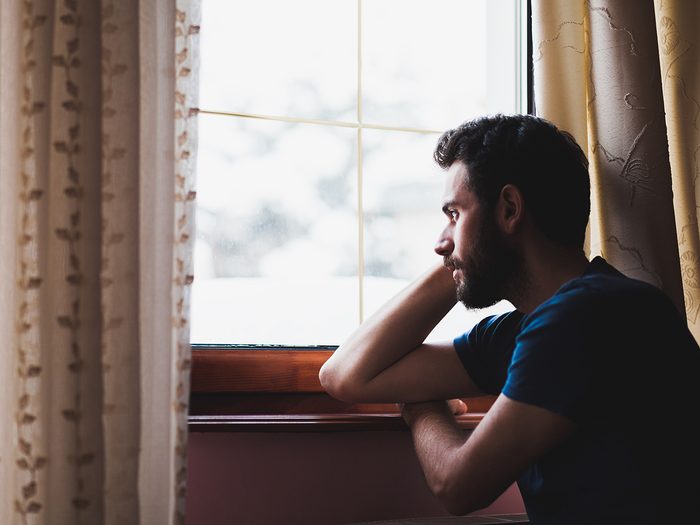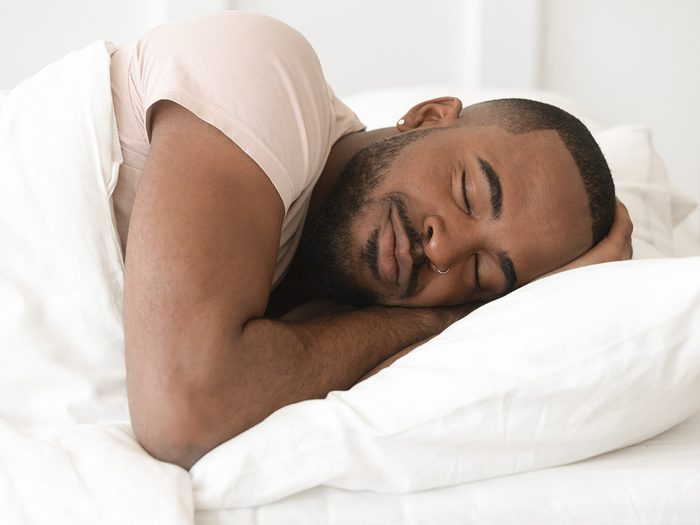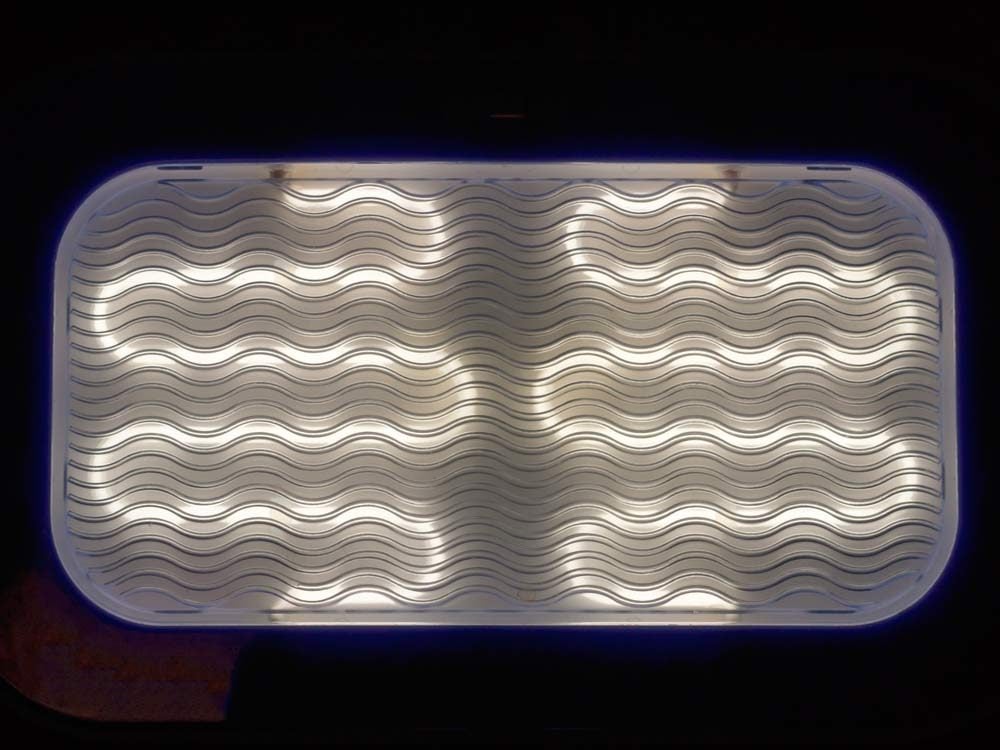
How to Beat Seasonal Depression
A lot of us go into hibernation mode every time the cold comes around, socializing less and feeling like we only have enough energy for binge-watching TV shows. But for the 15 per cent of Canadians who suffer from seasonal affective disorder (SAD)—depression that occurs every year, most often in the darker months—it goes beyond that. They oversleep, overeat, and feel guilty, irritable and hopeless. The symptoms usually come on in the fall, peak in late January, and go away in the spring.
About three per cent of Canadians acquire a more severe form of SAD, which can have a devastating impact. But while the condition is now widely known, we still don’t know exactly what causes it. The prevailing theory is that long winter nights throw off your circadian rhythm—the internal clock that regulates when you feel sleepy and when you’re alert. “As the days get very short, some people have difficulty adapting to that change, and the body’s rhythm is thrown out of sync,” says Robert Levitan, a psychiatrist at the Centre for Addiction and Mental Health and professor of psychiatry at the University of Toronto. That would explain why people who live closer to the equator, where the days are the same length year-round, are much less likely to acquire SAD; only one per cent of people living in Florida have it, for instance.
Another hypothesis is that the lack of sun changes your brain activity. If you don’t get enough light, your body produces fewer neurotransmitters like serotonin, which helps keep your mood stable, and too much melatonin, the hormone that makes you feel sleepy. SAD may also be hereditary; having a relative with the condition increases your chances of getting it by up to 17 per cent. And a University of Iceland study that screened Winnipeggers for SAD found that those with Icelandic genes were significantly less likely to have the disorder, suggesting that people whose ancestors are from climates with less sun may have built-in resistance.
There is light at the end of the tunnel—and not just spring. For people who suffer from seasonal affective disorder—and really, for anyone made grumpy by 4:30 p.m. sunsets—a combination of lifestyle changes and doctor-recommended treatments can reduce symptoms and provide lasting relief. Read on to find out how to beat seasonal depression.

Let in the Light
Exposure to as much sun as possible helps. Keep your curtains open all day, and rearrange your furniture so you’re regularly in bright places in your home. Install skylights if you can. Also, while artificial light isn’t as good as the real thing, adding more lamps to dark areas in your home is better than nothing. A sunny vacation will offer a welcome, if temporary, respite from the winter blues.
Discover the best Caribbean beaches for every type of traveller.

Rely on Routines
Winter’s long nights throw off your sleep cycle, but keeping a regular bedtime and wake time can help regulate it, and prevent both insomnia and oversleeping. Also, dim your lights at night and avoid screens for about two hours before heading to bed. (Here’s more advice on how to fix your sleep schedule.)
During the day, regular aerobic exercise can help you manage stress, feel more alert and increase your emotional resilience. “When you exercise, your dopamine and serotonin levels rise,” explains Ted Jablonski, a family doctor in Calgary who has suffered from SAD for most of his life. “Just 20 to 30 minutes, five or six days a week, can really change the chemistry in your brain.” A brisk noon-hour walk can do double duty, as you’ll get some sunlight, too.
Find out what happens to your body when you start walking 10,000 steps a day.

Connect with Others
When people become depressed, they also start to pull away from things they like doing, and the more you withdraw, the less pleasure and sense of accomplishment they feel in general. It’s a downward spiral,” explains David Dozois, a psychologist and chair of clinical science and psychopathology at Western University in London, Ontario.
He suggests making a point of finding wintertime ways to do whatever brings you joy during the summer, whether that’s socializing, participating in outdoor activities or being in a band. “I encourage patients to ‘fake it ’til you make it.’ Just do it, even if you don’t feel like it at first,” he says.
Explore the best winter hiking trails across Canada.

Go with the Glow
Light therapy using an ultraviolet-filtered lamp is the most common treatment for SAD. “Patients prefer it, and doctors like it because it works quickly and it’s very potent,” says Levitan. People typically are encouraged to use their illuminated unit for at least half an hour a day in the morning, which essentially tricks their body into thinking it’s already spring.
“I found immediate relief with my light box,” says Diana Lillo, a 54-year-old Ontario-based entrepreneur who suffers from extreme cases of SAD. “When I sit in front of it, my mood changes, I feel more energetic and more at peace. The anxiety and depression just slip away.”
Some people with SAD also find “dawn simulation” helps—this is usually accomplished with a custom alarm clock connected to a light that gradually becomes brighter before your set wake up time. Its effectiveness has not been studied as much, but it works for many people and is easier to squeeze into a busy schedule.
Discover more potential benefits of light therapy.

Make a Therapy Appointment
Cognitive behavioural therapy (CBT) is an effective way to combat seasonal depression, or any form of depression, says Dozois. The treatment usually takes between 12 to 16 weeks to complete, and involves setting up tasks that challenge your behaviour—resisting the natural tendency to socialize less during the winter, for instance.
CBT practitioners also coach people to address the negative automatic thoughts that might, for example, keep a person from staying connected. “If someone passes me at work and doesn’t say hello, my thought might be, He doesn’t like me. Okay, that’s one possibility, but what’s another? Maybe he’s stressed about a deadline or maybe he didn’t see me,” explains Dozois. “It’s putting that thought on trial, and coming up with an alternative, more valid one.”
Find out how you can support someone who’s suffering from depression.

How to Beat Seasonal Depression With Medication
Antidepressants are also used to treat seasonal affective disorder, often alongside light therapy and CBT. “Typically we use medications that are activating, rather than those with a sedative effect,” explains Jablonski. He usually prescribes Bupropion—which, unlike many other antidepressants, doesn’t usually cause sleepiness or weight gain—but selective serotonin reuptake inhibitors (SSRIs) are also common. Those people who are already taking these drugs may simply increase their dose starting in the fall.
Combining treatments four, fix and six has turned winters around for Lillo. “My depression will always be with me, but having a toolbox that helps me feel better and deal with my emotions makes a huge difference,” she says.
Jablonski, who swears by his light box and regular exercise, tells his own SAD story often in the hopes that it will inspire others to seek help. In 2010, he even ran and biked all the way across Canada to raise awareness of the disorder.
“The existence of SAD is well-known now,” he says. “What isn’t as well-known is the extent of how disabling it can be—and that you can actually treat it and get better. My plea to those with SAD is: You don’t have to dread winter and lose months out of every year. You don’t have to suffer unnecessarily.”
Now that you know how to beat seasonal depression, discover the surprising ways cold weather can be good for you.